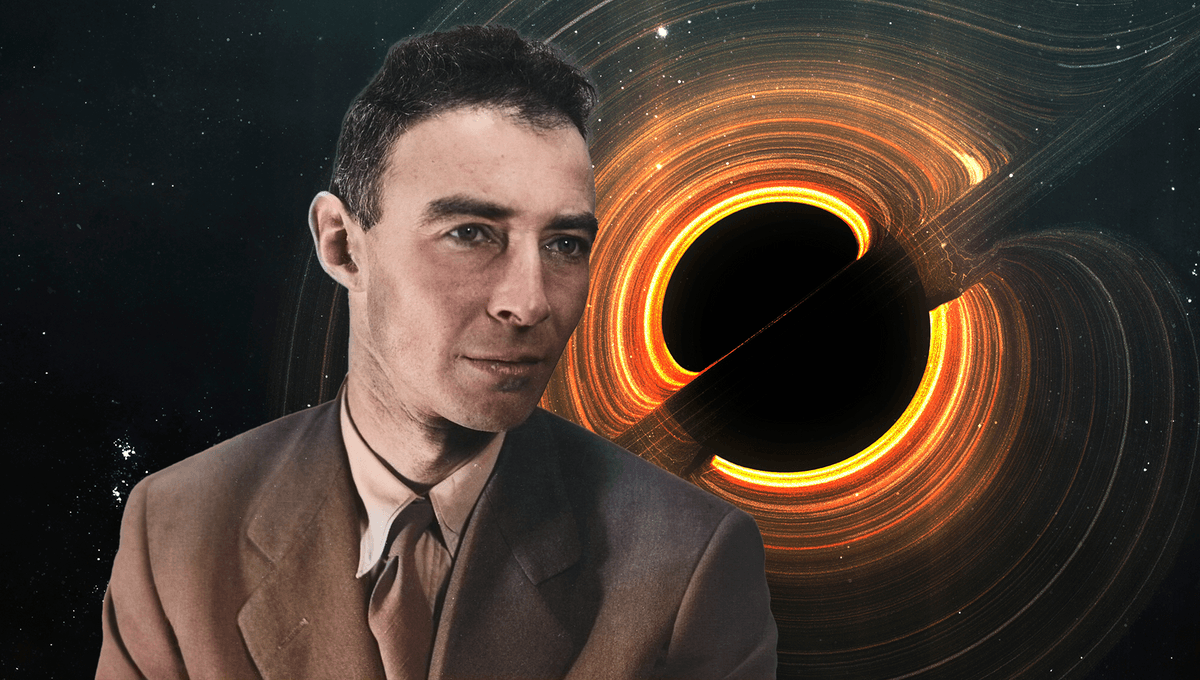
The existence or not of a theoretical object or phenomenon doesn’t stop physicists from studying it. First of all, it builds the foundation for explaining different known events and it is possible that because math allows it, the universe does too. Black holes are such objects. For decades, they were mere oddities causing problems in Einstein’s general relativity until they were discovered out in the universe, revealing that the famous theory of gravity has its limits.
There are many physicists who worked on them long before the first was observed – Cygnus X-1, in 1971. Among them, was J Robert Oppenheimer, who played an important role in estimating how dense an object can be before it turns into a black hole – a calculation that has major implications in some of the most groundbreaking observations of today.
General relativity was published in 1915 and by 1916, German physicist Karl Schwarzschild found a solution to the Einstein field equations where things broke apart. His solution became singular at a certain radius, meaning that the terms of the equation became infinite. Now, from those first descriptions, we get the term singularity to describe the black hole and also the Schwarzschild radius, where the event horizon of a black hole is located.
The following decades had scientists discussing how “physical” this solution was. The assumption was that things don’t just collapse on themselves, internal forces would push back. A planet doesn’t collapse on itself simply because the forces between atoms are enough to keep it stable. A star can be much heavier but the energy released by nuclear fusion at its core balances out the effect of gravity.
But what happens when a star like the Sun is no longer fusing? It collapses. Still, that was not thought at the time to be unstoppable. Quantum mechanical effects would turn the object into a dense sphere made of electron-degenerate matter. The internal material is no longer in a classical plasma but in a new state where electrons, protons, and neutrons (which are types of fermions) interact.
Fermions cannot all be in the same energy state at the same time (this is known as Pauli’s exclusion principle) and this property is what creates a pressure that counteracts the gravitational pull towards a collapse. We call objects like these white dwarfs, and the Sun is destined to become one. This quantum pressure was not a hard limit though.
Back in 1931, Subrahmanyan Chandrasekhar calculated that you can’t have an indiscriminately big white dwarf. A non-rotating object made of electron-degenerate matter with a mass over 1.4 times that of the Sun (now called the Chandrasekhar limit) doesn’t have a stable solution. This is only partially correct.
The limit is now seen as how much material-thieving white dwarfs can steal from a companion before going supernova. This is known as Type Ia (pronounced one-A) supernova and they have all the same luminosity, making them a great standard candle to measure how far galaxies are. So what’s the stable solution that is even more dense than a white dwarf? Well, that’s a neutron star!
While white dwarfs were becoming known to science at the same time as these theoretical discussions were taking place, neutron stars had not been discovered just yet. We’ll need Joycelyn Bell Burnell in 1967 with the discovery of the first pulsar (pulsating neutron stars) to bring them from theory into reality.
Neutron stars allow for greater masses and densities, and that limit is now known as the Tolman–Oppenheimer–Volkoff limit named after Oppenheimer and George Volkoff who worked it out in 1939, thanks to the research of Richard Tolman.
For masses lower than that limit, the short-range repulsion between neutrons is enough to balance out the gravity. But for higher masses, the neutron star will collapse into a black hole. The limit tells how massive stars going supernova can turn into neutron stars or into black holes, depending on their original mass.
But recently, we have also had a way to test the Tolman–Oppenheimer–Volkoff limit with some of the most advanced experiments we have: gravitational wave observatories. The first historic observations of a collision between neutron stars (with the two objects turning into a black hole) allowed us to estimate the limit in a real setting.
While Oppenheimer worked on this theoretical problem long before we knew of neutron stars and black holes as real objects, knowing they exist has not solved all the mysteries that surround them. The neutron star collision puts the limit to between 2.01 and 2.17 solar masses. And yet the most massive known pulsar is 2.35 times the mass of the Sun.
The road to understanding the densest objects in the universe is probably still long, but some of the most famous physicists of the 20th century played a role in what we know and understand so far.
Source Link: How Oppenheimer Worked On Black Holes Before We Knew They Existed